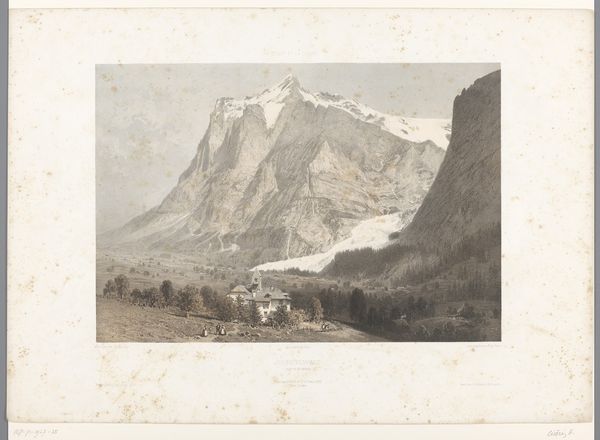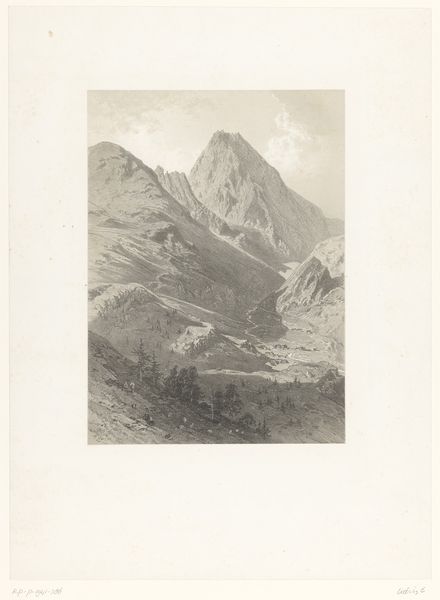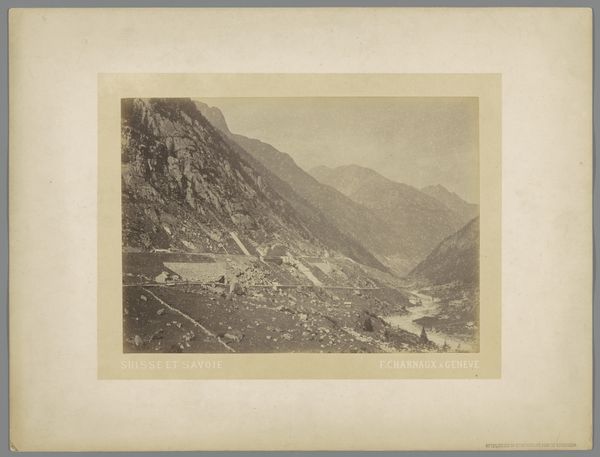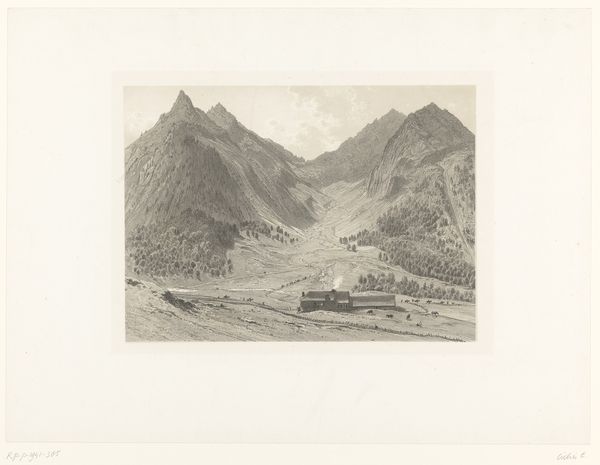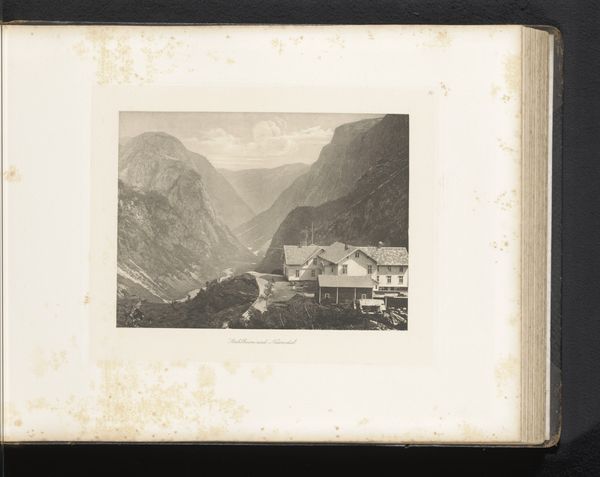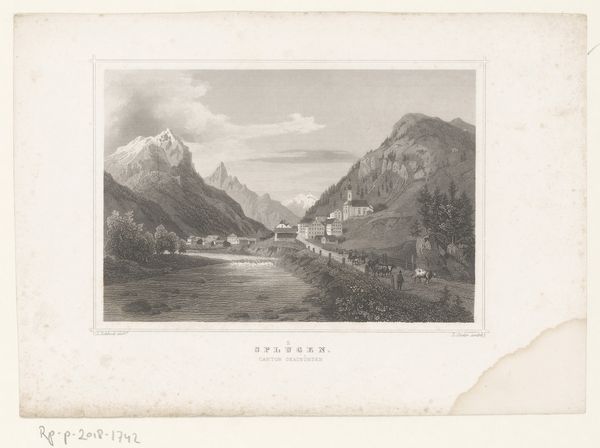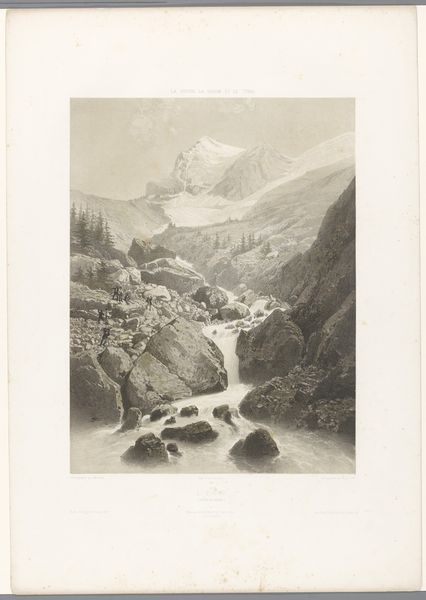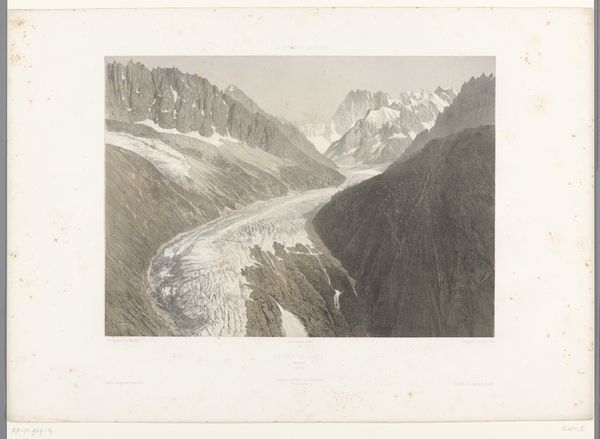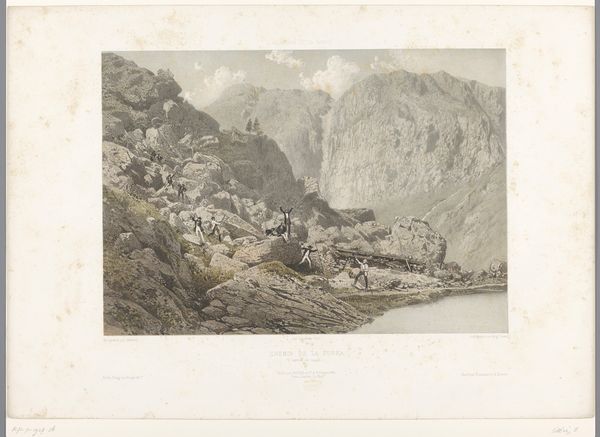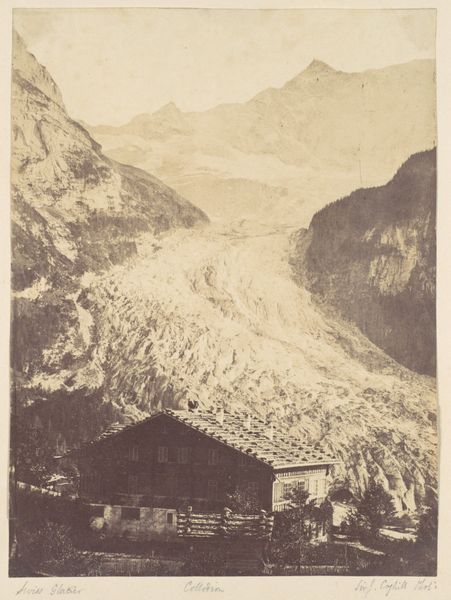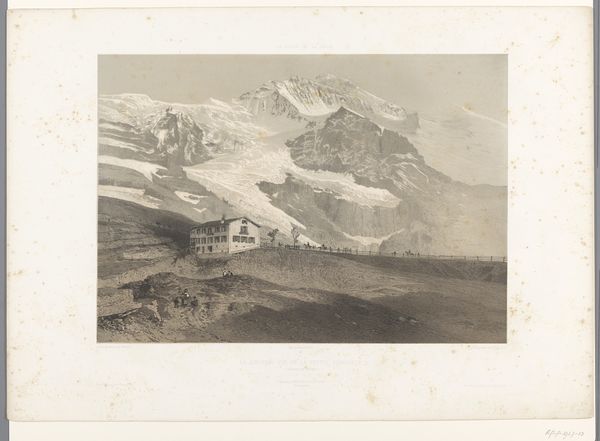
Dimensions: height 400 mm, width 565 mm
Copyright: Rijks Museum: Open Domain
Curator: Eugene Ciceris' "View of the Wengernalp," completed in 1859, really captures a pivotal moment. This etching shows a landscape deeply rooted in the romantic yet realist traditions. What grabs you when you first look at it? Editor: Gosh, it's like stepping back in time. A wistful, slightly somber mood washes over me, seeing that isolated house snuggled against the imposing mountain. Those crisp, thin lines making up that dramatic geology create a real sense of grandeur and solitude. Curator: Right, and note how this print—produced via etching—wasn't merely about depicting scenery. Think about the role of printmaking at the time. It allowed for broader dissemination and accessibility to views that only elite tourists might experience in person. These weren't casual snapshots, it was about the commodification of the sublime. Editor: Absolutely. The choice of etching adds to that effect. I imagine Ciceris carefully layering lines, painstakingly working with the materials, and in the final product, imbuing the mountainside with so much texture it almost makes you feel cold just looking at it. And all the figures… I feel like one of them, quietly witnessing the sheer scale of it all. Curator: The technical skill is undeniable. Beyond technique though, consider the broader culture producing these scenes. Alpine tourism was just gaining momentum. A work like this actually fuels the demand, and contributes to shaping a cultural idea around what constitutes "picturesque" scenery in Switzerland. And so the print, as a transportable object, almost dictates value systems around geographical landscapes. Editor: It also whispers about journeys. Look at the winding path; I wonder about those travelers, the stories they carry, how those stories must have played against a canvas like that mountain. A touch dramatic, I know. It makes me think what materials went into the stagecoach, all the people involved. Curator: Exactly. In effect the labor—not just the artist, but those dependent upon growing mountain tourism, and then also the very act of commodifying experience that these prints speak to—is almost as much of a subject as the physical place represented in the etching. Editor: Makes you think about what will remain. After all that hustle-bustle fades into archives and library drawers… will the peaks outlast our imaginings? Thank you, the etching really comes to life like this.
Comments
No comments
Be the first to comment and join the conversation on the ultimate creative platform.
